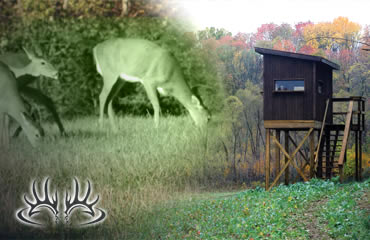When a deer approaches a treestand or steps onto a food plot, the inexperienced hunter’s instinct is to shoot it as soon as possible, or before it gets away.
There’s nothing wrong with that if the only goal is to quickly fill a tag and head to the processor, but it robs beginners of important learning experiences that will serve them well later in their hunting careers.
Deer are their own worst enemies when observed unaware, and experienced hunters know this. When at ease, deer are living buck sensors.
Veteran hunters allow deer to graze into range, read the animal’s body language and use it to their advantage. Deer will telegraph to you when other deer are approaching, even if you can’t hear a thing. They can even tell you if the buck of your dreams is hanging back in the thick cover.
Young hunters, pay close attention to a deer’s ears, eyes and even facial expressions. The deer you’re watching can decipher noises deep in the woods, and will point out where other deer are approaching long before they arrive. Sometimes they even tell you if the animal is just a possum, a coyote or perhaps a dominant buck.
If their head and ears constantly turn different directions, they are on scan mode and there’s not likely anything nearby. Once they sense something, their heads will snap up and their ears point at the noise like satellite dishes. It might take a while for the mystery animal to appear, but their ears will continue to be primarily focused on what’s out there.
And if a deer stares into the woods with a look of concern, that could be a bad thing, but sometimes it’ a VERY good thing. They are sensing either a predator or human, but quite often, it’s a dominant buck out there.
Immature bucks will often spook before the females if a big boy is about to arrive. If a forkhorn acts edgy, be ready! And during the rut, if does look off into the distance and act spooky, be EXTRA ready!
Does will even sound off an alarm snort if a rutting buck is chasing another doe nearby. Listen for that, as well as commotion in the forest. It might sound like a cutting horse and a herd of cows in the woods.
I can’t count the times deer have told tell me when to shoulder my rifle or pick up my bow. And on countless occasions, I’ve watched their ears, faces and body language to predict exactly where a buck is going to appear.
Reading body language just takes experience, which means allowing the first deer on the scene. Watch them become casual and do deer things; you can’t observe if you shoot the first thing that appears.
When holding out for a wallhanger, watch your living buck sensors and learn to read them.
Read Recent Tip of the Week:
• Of Scope Cuts and Inner Voices: You are never too old to join the “Half Moon Club” if you don’t heed your inner voice and...




.png)